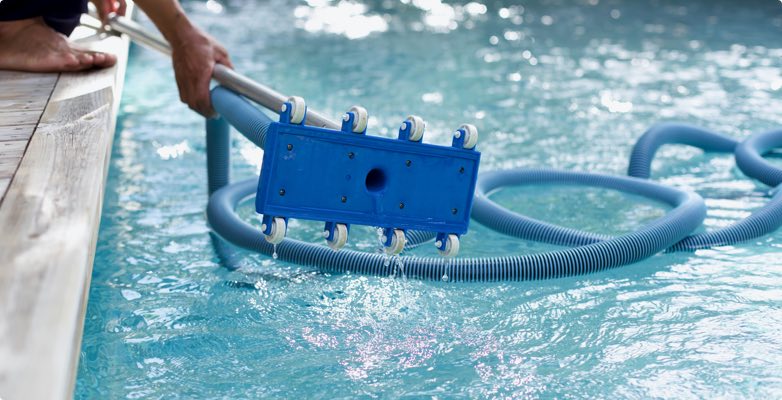Keep your pools sparkling and in pristine condition by properly prepping your staff and pool facilities for a busy swimming season.
According to the Public Playground Safety Handbook Center for Disease Control (CDC), Americans spend on average 1 billion days per year in recreational swimming water. That’s 1 billion chances for swimmers to suffer from chemical-associated health problems, disease outbreaks and even fatal accidents if aquatic facilities are not upkept properly. Multifamily operators can avoid public health violations, protect residents from hospital visits and avoid lawsuits by following a regular inspection and maintenance schedule for every pool in the portfolio. Read on for helpful tips on prepping your staff and your pools for a busy swimming season.
1. Get your property staff CPI™ certified

The National Swimming Pool Foundation offers an affordable, CDC-recommended standardized training program for pool operators to achieve qualification as Certified Pool Inspectors™ (CPI™). The 3-hour online course covers basic code requirements, pool area inspections, and recreational water illnesses, among other critical topics to ensure your staff is equipped to maintain exceptional pools and facilities. Investing in your employees’ operational proficiency supports their professional development, benefits your bottom line, and keeps your company’s pools operating efficiently.
2. Regularly check chlorine and pH levels

During pool season, the CDC recommends checking your pH and disinfectant levels at least twice a day (or more if your pools sustain a high degree of daily use!) to protect swimmers from recreational water illnesses and maintain pool pipes and sanitizer efficiency. Use DPD test kits or test strips (which tend to be less accurate) to maintain a pH between 7.2-7.8 and a free chlorine concentration of at least 1 parts per million (ppm). This chlorine concentration and range of pH is ideal for eye and skin comfort, preventing the physical irritation that occurs when proper levels are not preserved — and also kills most germs like hepatitis A, e.coli and waterborne parasites. Importantly, controlling the correct chemical levels in your pools extends the lifespan of your pipes and pool equipment, so you can avoid frequent and costly replacements.
3. Establish a weekly cleaning regimen

Pools are notorious for their demanding upkeep. Beyond testing your pH and chlorine levels, pool crews should establish a regular cleaning schedule to maintain pristine conditions and reduce the need for extra chlorine or chemicals. Here are some of the periodic checks HowStuffWorks and the CDC recommend performing on regular basis:
- Skim floating debris with a long-handed net
- Check pool water levels weekly and refill if necessary
- Clean out strainer baskets to increase pool circulation efficiency
- Vacuum weekly to keep water clear of debris
- Brush tiles and pool walls to minimize slime buildup
- Service equipment and replace needed parts to avoid system failure
- Clean out the pool filter periodically (but not too often!)
- Superchlorinate (shock) water if necessary to get rid of harsh chloramine smells
- Clearly place warning signs and safety equipment where necessary
- Educate staff and pool users about RWIs (recreational water illnesses)
4. Maintain accurate inspection records

Keeping meticulous inspection records for pool maintenance will ensure your staff are always up to speed with the latest pool checks. However, if you are relying on a paper or Excel-based workflow, your inspection process lacks the real-time property-level monitoring critical for upholding high quality and safety standards.
The visibility created by moving to a mobile-based inspection workflow empowers you to achieve 100% compliance and see in real time which of your properties are skipping out on collecting critical data with regular inspections. For instance, the Maxus Properties management team keeps their pool open all-year round and uses mobile inspection checklists as a critical part of their workflow and pool maintenance.
Keep your residents and your communities safe.
Conduct regular pool inspections and maintain high quality standards across your portfolio with a mobile inspection workflow.
REQUEST INFO
LA native Yuliya Maystruk is a marketing specialist with a unique background in B2B marketing, entertainment management, and audio visual advertising. She obtained a dual degree in Political Science and Communications Studies from her sunny hometown at UCLA (Go Bruins!). Apart from leading marketing operations at HappyCo, Yuliya enjoys live music, traveling the globe, high intensity fitness, and scouting for the best almond milk latte in town.





